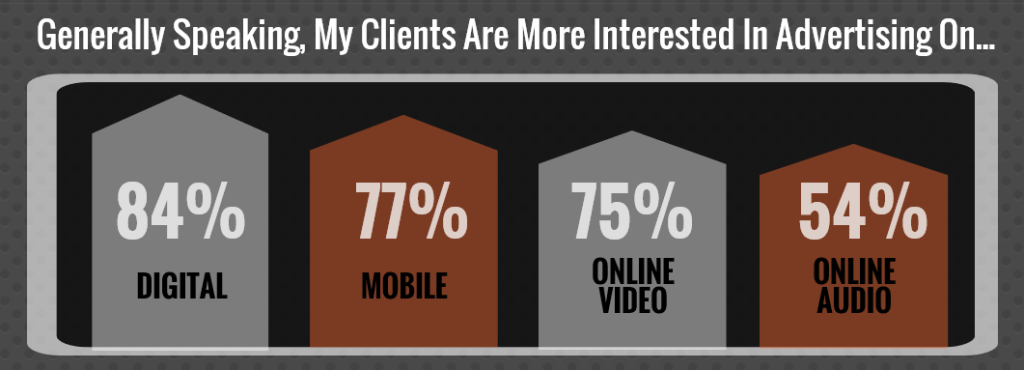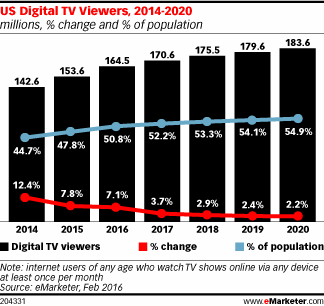Radio has a history of trying to give advertisers what they want. After all, wasn’t it so-called agency dictates that tipped so many radio stations into trying to appeal to 25-54 year-olds? It’s always been about chasing those elusive ad dollars.
So you’d think that when agency bigwigs come right out with precisely what they’re looking for from media sources, radio should be paying close attention.

Now a STRATA research study conducted late last year among agency execs reveals rapidly rising interest in streaming video, as well as streaming audio, as media ad vehicles. From year to year, three-quarters say their clients are more interested in streaming video, while more than half say streaming audio has gained in importance.
These “Mad Men” (and women) have a fixation on visual media, led in large part by their outsized interest in streaming video. In many ways, radio has obvious advantages over so many other media outlets – IF it answers the agency bell and steps up with video as a marketing tool.
Yet for so many radio operators, video is still embryonic. Some stations (or clusters) now have a video editor on staff, as well as capital investments in cameras, editing software, and other tools. But for many others, video isn’t even in the tool kit.
And by the way, our new Techsurvey results continue to point to the reality that a larger percentage of the radio audience streams video over audio, underscoring just how pervasive online video consumption has become. Between Netflix, YouTube, and the myriad other web streaming services providing movies, comedy, news, music, and other video offerings, consumers just can’t seem to get enough video. We’re also seeing a sharp rise in connected TVs, another indication that hardware and software are coming together to power this trend.
One of the takeaways at Gordon Borrell’s Local Online Advertising Conference earlier this month was the need for integration in sales and marketing packaging. Web video is a key component in creating multi-media campaigns that can capture more ad dollars, while giving the audience more reasons to engage with station personalities and the brand itself.
STRATA’s study underscores that emphasis on video is at the center of both advertiser and audience interest:

STRATA’s larger infographic is here.
This ad agency interest in video isn’t just about chasing a media fad. Video consumption continues to rise. A new eMarketer study reveals this year will be the first time more than half of Americans will stream TV shows online at least monthly. The trend line moving forward is unmistakable.
Some radio stations are stepping up, investing in video, and reaping benefits, not just in ad dollars but in branding. That’s because a key reason why video works is its ability to take the audience “backstage” so they can see the studio, the talent, and how the process comes together. It’s like going inside the sausage factory, something that true fans enjoy.
WRIF’s Dave & Chuck the Freak’s daily video series – “Peep Show” is a great example.
Major League Baseball has gotten into the act, increasingly using Facebook live streaming to take fans behind the scenes at Spring Training this year. I’m happy to say the Detroit Tigers are one of the teams leading the way, turning on the cameras about once a day to feed that fan frenzy.
And why not? Visual bits and features where the audience can’t see who or what a personality is talking to or about are becoming fewer and farther between. And aside from advertiser demand for video from media brands, web video provides a chance to enhance the in-studio guest experience – something that’s good for both celebrities and the personalities who snag them.
When it comes to video, it’s a no-brainer.
Fred Jacobs will be presenting the key findings of Techsurvey12 at the Worldwide Radio Summit in L.A. on April 13-16. Details here.
- Every Company Is A Tech Company - January 14, 2025
- The Changing Face Of Social Media (OR WTZ?!) - January 13, 2025
- Traveling At The Speed of CES - January 10, 2025




Leave a Reply